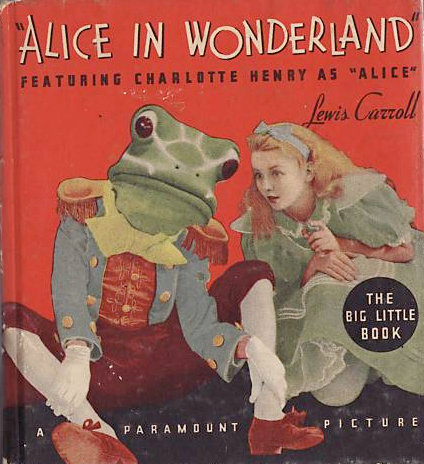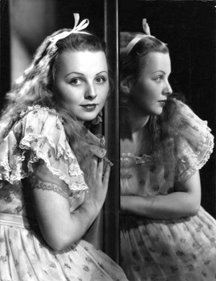 Search the title “Alice in Wonderland” at the Internet MovieDatabase, and you’ll find more than two dozen film and TV adaptations of LewisCarroll’s freaky fantasy, ranging from the well-known Disney animated versionto the obscure 1982 musical “Alice at the Palace,” in which Meryl Streep hurlsherself down the rabbit hole.
Search the title “Alice in Wonderland” at the Internet MovieDatabase, and you’ll find more than two dozen film and TV adaptations of LewisCarroll’s freaky fantasy, ranging from the well-known Disney animated versionto the obscure 1982 musical “Alice at the Palace,” in which Meryl Streep hurlsherself down the rabbit hole.
Next week, director Tim Burton adds his “Alice” to the list.But the title is something of a misnomer. Burton isn’t retelling the old story:The screenplay by “Lion King” author Linda Wooverton is actually a sequel tothe original, which sends a teenage Alice (Mia Wasikowska) back to Wonderlandto bring down the maniacal Red Queen (Helena Bonham Carter), who keeps herterrified subjects under her thumb with the help of the vicious Jabberwock(Christopher Lee).
Early word on the film is mixed, to say the least.Considering the earlier screen versions of “Alice,” however, Burton wasprobably wise to find a new plot. For a tale that’s been told so many times byfilmmakers, there aren’t many admirable “Alice”-inspired works out there.
The problem can be traced directly back to Carroll’s books(“Alice’s Adventures in Wonderland” and “Through the Looking-Glass, and WhatAlice Found There”), which are basically strings of encounters with kooky characters.Alice wanders from place to place and creature to creature in episodic fashion;it’s a structure that works better on the page — where it naturally breaks downinto brief chapters — than it does on the screen.
In “The Wizard of Oz,” a story similar in many ways to“Alice,” Dorothy has a clear goal. She wants to return to Kansas. Her journeyto the Emerald City and her battle with the Wicked Witch of the West aremotivated by her desire to find her way back home. Alice, in contrast, hasnothing much at stake, nor any major mission. She is merely traveling through aloony landscape at a leisurely pace and, at the end of both books, she realizesher adventures have been nothing more than dreams. (The same ending was tackedonto the 1939 film of “Wizard,” even though in L. Frank Baum’s novel Dorothyactually does go to Oz and has to be transported back to Kansas by way ofGlinda’s Silver Shoes.)
 If you’re looking for a comparison piece for Burton’sversion, check out the 1933 “Alice in Wonderland,” which arrives on DVD March2. It’s an elaborate, ambitious extravaganza that Paramount originally releasedduring the holiday season. (It obviously was big news at the time since it wasfeatured on the cover of Time Magazine during Christmas Week; it also spawned anow-collectable Big Little Book, illustrated with dozens of photos from thefilm.)
If you’re looking for a comparison piece for Burton’sversion, check out the 1933 “Alice in Wonderland,” which arrives on DVD March2. It’s an elaborate, ambitious extravaganza that Paramount originally releasedduring the holiday season. (It obviously was big news at the time since it wasfeatured on the cover of Time Magazine during Christmas Week; it also spawned anow-collectable Big Little Book, illustrated with dozens of photos from thefilm.)
The screenplay combines both Carroll classics into acrazy-quilt of a story. So while a house-bound Alice (Charlotte Henry) doesnotice the White Rabbit scampering around outside on a snowy night, she entersWonderland not by plunging into the rabbit hole, but by stepping through thelarge mirror above her fireplace to enter what she calls “the looking-glasshouse.”
Inside, she meets such familiar figures as the Mad Hatter(Edward Everett Horton, who often played the second banana in the FredAstaire/Ginger Rogers musicals), the weepy Mock Turtle (a very young CaryGrant), the Cheshire Cat (one-time matinee idol Richard Arlen), theaccident-prone White Knight (Gary Cooper in a funny cameo) and Humpty Dumpty(memorably played by a perfectly cast W.C. Fields).
Shot in black-and-white — which gives the visuals a looksimilar to John Tenniel’s illustrations for the original editions of the“Alice” books — the 1933 film is a treasure trove for movie buffs eager to play“spot the star,” and the sumptuous sets and costumes are delightful. If thespecial effects seem somewhat primitive to contemporary eyes, they still do areasonably good job of conveying the weird goings-on in Wonderland and most ofthe books’ most famous scenes (including the “pool of tears” and the RedQueen’s chaotic croquet game) are well-presented. A brief animated sequencethat tells the story of “The Walrus and the Carpenter” is a definite highlight.
This “Alice” has the same weakness as many other depictionsof Carroll: There’s no driving force behind the story, which quickly becomessomething like a vaudeville show, in which you don’t expect any sort ofconnections between the various acts. If you don’t like a particular characteror situation, just sit tight — a new one will be along shortly. While Henrylooks the part of a prim Victorian maiden, her Alice doesn’t develop much of apersonality. She’s primarily on hand to serve as the slender thread that tiesthe package together.
Some versions of “Alice” emphasize the humor and playfulnessof Carroll’s material; this one frequently pushes the stories’ darker sides. Ina truly demented denouement set at a bizarre banquet, many of the charactersAlice has encountered return to crown her as a queen, first honoring her andthen humiliating her as the evening spins out of control. It’s an utterlysurrealistic scene full of disturbing images, such as a talking leg of muttonthat could easily have popped out of a David Lynch movie. This “Alice inWonderland” reminds us how easily wacky fantasy can give way tonightmarishness.
Support City Pulse - Donate Today!
Comments
No comments on this item Please log in to comment by clicking here